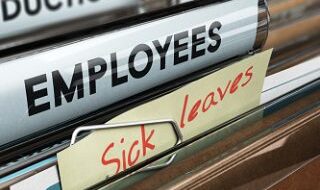April 2, 2024 Last Edit: July 26, 2024
“Minnesotans need lawmakers to set aside expensive and risky plans for the future and address the health insurance cost cliff staring us in the face now.”
MINNEAPOLIS (April 2, 2024) – In an op-ed for the Minneapolis Star Tribune, NFIB State Director John Reynolds warned lawmakers against ignoring the health insurance cost cliff that Minnesotans face in 2026. Reynolds urged lawmakers to set aside a “public option” – which would not be fully implemented until 2029 – and, instead, prioritize proven solutions and bipartisan reforms to expand health care access before Minnesota hits the cost cliff.
In the op-ed, Reynolds writes:
“The only plan being discussed this year to address this cost cliff is a ‘public option.’ This type of program involves state government offering its own health insurance product — imagine combining the friendly customer service of a large insurance company with the efficiency of a government agency — or creating a standard policy that’s offered through a private company
“Lawmakers are contemplating a hybrid version that would open an existing state program for low-income folks, MinnesotaCare, to all income levels.
“According to a state report released earlier this year, this version could require nearly $700 million in annual taxpayer subsidies once fully implemented. This includes $364 million per year from the state, well above the cost of reinsurance for a program that will benefit 30,000 fewer people.”
CLICK HERE to read the full op-ed. Excerpts are below:
Don’t Take Risks with Minnesota’s Health Insurance Cost Cliff
Star Tribune
By: John Reynolds
March 28, 2024
Seven years ago, Minnesotans who buy their health insurance on the individual market were shocked by back-to-back annual premium increases of more than 30%.
According to data from the Minnesota Department of Health, these Minnesotans experienced a cumulative 90% increase in their health insurance premiums from 2014 to 2017. […]
Then, the individual market stabilized. Premiums actually declined, on average, in 2018 and 2019. Since then, they’ve stayed relatively steady, and individual market enrollment has grown modestly.
What happened? In 2017, the Minnesota Legislature created a program called reinsurance that stopped the cycle of premium hikes and canceled coverage. […]
As a result, state taxpayers have paid far less than half the cost of a program that makes health insurance more affordable for roughly 200,000 Minnesotans. Our reinsurance program has become a national model emulated by red and blue states alike. […]
Despite the bipartisan success of the program, last year DFL lawmakers effectively defunded the program and it will end after 2025. Expanded federal subsidies for health coverage also expire at the same time.
As a result, Minnesotans in the individual market face a steep cliff come 2026. An independent report shows health insurance premiums could spike by 50% or more.
The only plan being discussed this year to address this cost cliff is a “public option.” This type of program involves state government offering its own health insurance product — imagine combining the friendly customer service of a large insurance company with the efficiency of a government agency — or creating a standard policy that’s offered through a private company.
Lawmakers are contemplating a hybrid version that would open an existing state program for low-income folks, MinnesotaCare, to all income levels.
According to a state report released earlier this year, this version could require nearly $700 million in annual taxpayer subsidies once fully implemented. […]
Proponents tout richer benefits under a public option, which could pay around 95% of covered medical costs compared with 70-80% for the typical individual market plan.
However, to offer richer benefits at a cost that is remotely attractive to potential customers, the public option requires two things. First, a heavy taxpayer subsidy as noted above. Second, the public option relies on much lower payments to hospitals and clinics.
These cut-rate payments threaten the financial stability of health care providers, particularly in greater Minnesota where access to care is already limited. […]
Minnesotans need lawmakers to set aside expensive and risky plans for the future and address the health insurance cost cliff staring us in the face now.
NFIB is a member-driven organization advocating on behalf of small and independent businesses nationwide.
Related Articles














